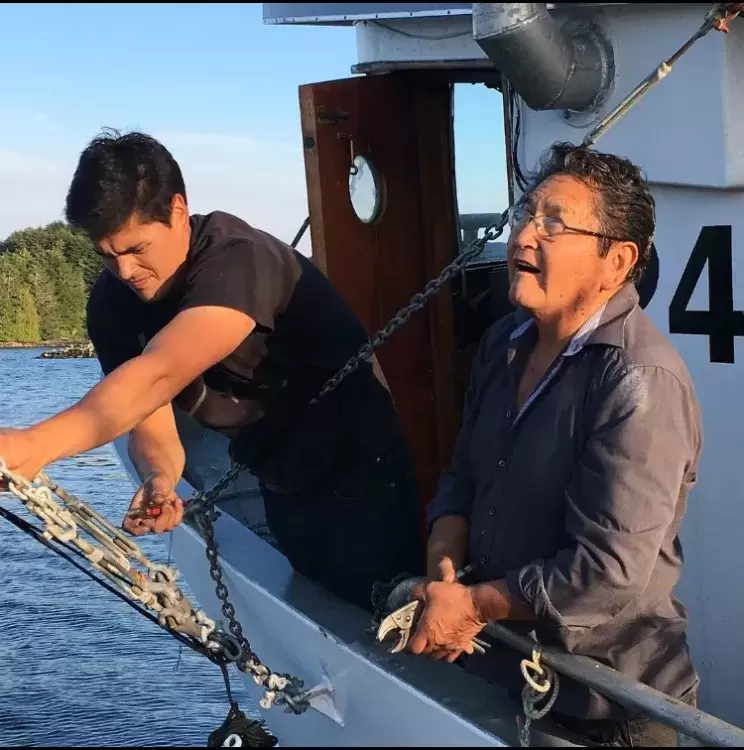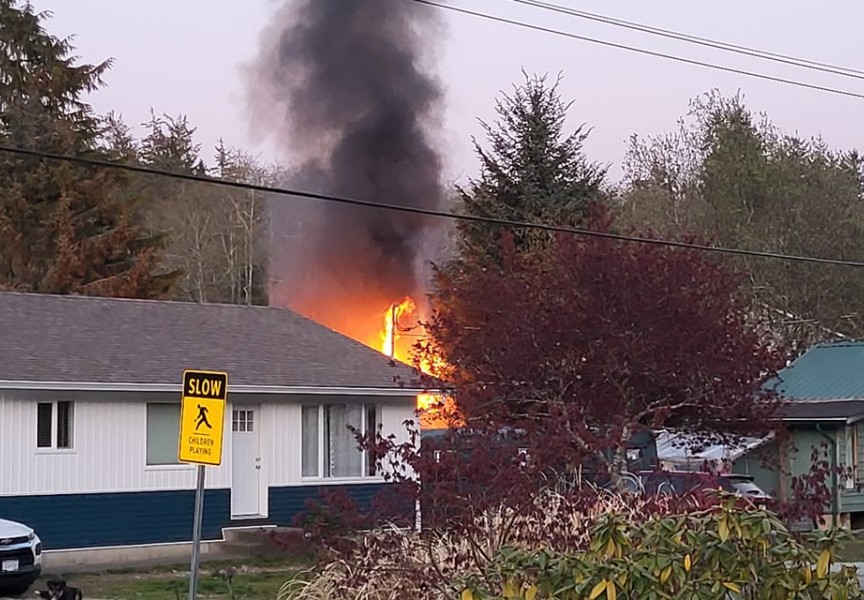A Tla-o-qui-aht fisherman who has seen generations of change on the water is responding to a recent court judgement with cautionary words.
On April 19 the B.C. Supreme Court confirmed the rights of five Nuu-chah-nulth nations amid a legal battle with Canada over fisheries on the west Coast of Vancouver Island. This recent judgement determined that Canada’s fishing authority infringed on the Aboriginal right ruled by B.C.’s top court in 2009, which stated the Nuu-chah-nulth nations can legally harvest and sell fish from their territories.
But Moses Martin, a 76-year-old Tla-o-qui-aht fisherman who has been involved in the fishery since his childhood, doesn’t expect to see the benefits from this court ruling until the region’s stocks are in better shape. He said the current situation cannot support more fishing within the court-defined area.
“Not for the next few years until we start doing something about our rivers and enhancing the stocks for future generations,” he said. “We’re always going to be fighting about allocations because we’re not doing enough to enhance the stocks.”
The recent B.C. Supreme Court ruling clarifies how the 2009 Ahousaht et al. judgement will be implemented on the water. A key part of this judgement is that the nations will conduct small-scale, multi-species fisheries with wide community participation within a nine-mile limit.
“This nine-mile restriction gives the plaintiffs access to the shore, inlets, and rivers in their territory, to the local shellfish, groundfish and rockfish, and to the migrating salmon and other fin fish that pass through their territory within nine miles of the shoreline,” stated Justice Mary Humphries in her judgement released on April 19.
“I’m actually disappointed” said Martin of the recent ruling. “We win this right to fish and sell it, but then we get put in a box where there’s no fish anyway. We haven’t won anything, really - at least not as commercial fishermen.”
Time will tell how fisheries can be managed within the nine-mile strip, which Humphries refers to as the Court Defined Area (CDA). The judge noted that this restriction has brought concerns from both the Nuu-chah-nulth nations involved as well as Fisheries and Oceans Canada.
“The plaintiffs do not want to be restricted to the CDA and, for the migrating ocean species, DFO does not manage such a small area, nor do they have the science or biological data to assist them in doing so,” stated Humphries.
The court case involves the Ahousaht, Ehattesaht/Chinekintaht, Hesquiaht, Tla-o-qui-aht and Mowachaht/Muchalaht First Nations, which operate the T’aaq-wiihak fisheries. For the last few years T’aaq-wiihak has run demonstration fisheries in the nations’ waters, with catch allocations comprising a small fraction of those designated to the recreational and Area G commercial sectors.
Martin said the nine-mile limit continues to put the Nuu-chah-nulth nations at a disadvantage.
“It’s crazy - unless if you have a sports fishing licence, then you can go anywhere,” he said. “Those guys go 20, 30 miles and sometimes 50 miles, depending on the weather.”
While growing up in Opitsaht, Martin first got involved in his community’s fishery at six years of age, when he cleaned his brother’s catches for 50 cents a day.
“Pretty much the whole community used to be involved in the fishing industry in one way or the another,” he said. “Many families had boats that they could convert into a seine boat at the end of the season, and they would all go up to Nootka Sound for chum fishing.”
Martin began skipping his own boat and crew at 17 years of age.
“The fishing season used to open up on April 15, and for about a six-month period in my latter years I was working 125 to 150 days a year,” he said. “Those were the glory days. Now we’re lucky if we get 20 days.”
By the early 1990s Martin estimates there were 20,000 people on fishing boats off Vancouver Island’s west coast. The stocks “bottomed out,” leading the DFO to buy back fishing licenses to thin out the number of people on the water, he said.
“To me the worst thing that ever happened was these seine boats that put on the drums. Before it used to be what we called table seines and we got our nets back through a power block. That used to take over an hour to get your net back,” said Martin, noting that newer nets were designed to allow no fish to get away. “When these drum seiners came along it took them 10 to 15 minutes to get it back, so they could make a lot more fish than we could with table seines.”
In recent years some improvements in stock enhancement have been made in northern Nuu-chah-nulth territory, such as sea pen rearing of chinook in Mowachaht/Muchalaht waters, said Martin. The Nootka Sound Watershed Society has ongoing enhancement initiatives, including collecting chinook from the Gold River each fall in early October. These fish are taken to the Conuma River Hatchery, where they are kept in ponds until they spawn. Fertilized eggs are incubated, hatched, reared and then transferred to lake and sea pens, where they are fed and monitored by trained volunteers before being released into the Gold River watershed. Each year approximately 500,000 chinook are released, according to the watershed society.
“It’s the only fishery we have left that we can catch numbers in,” said Martin, adding that in Esperenza Inlet fish can be caught beyond the nine-mile limit. “That starts around nine miles and out to 15, 20 miles.”
But in Tla-o-qui-aht territory the lack of feed became disturbingly apparent in recent years, when Martin found unusual contents in the stomachs of some of his catches near Long Beach.
“Three years ago was the first time I’ve ever seen salmon eating jellyfish, and it wasn’t just one or two jellyfish, there were half a belly full of jellyfish,” he said.







